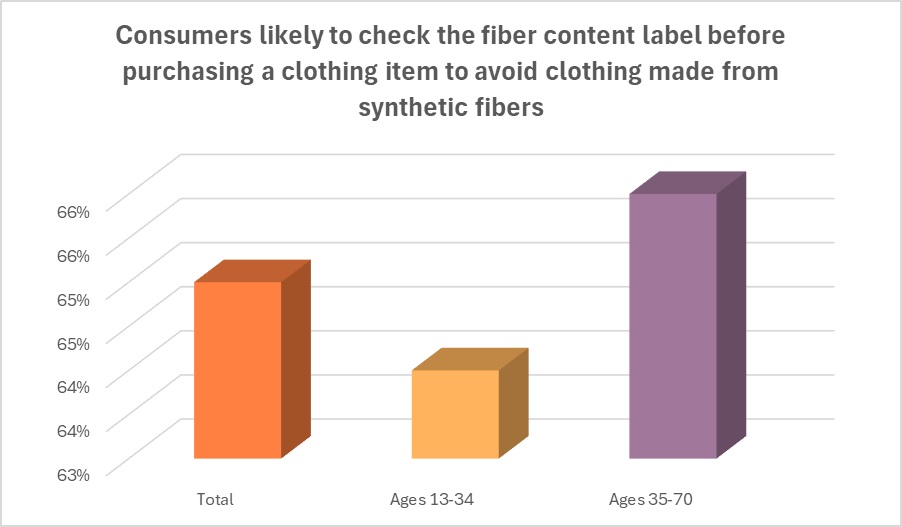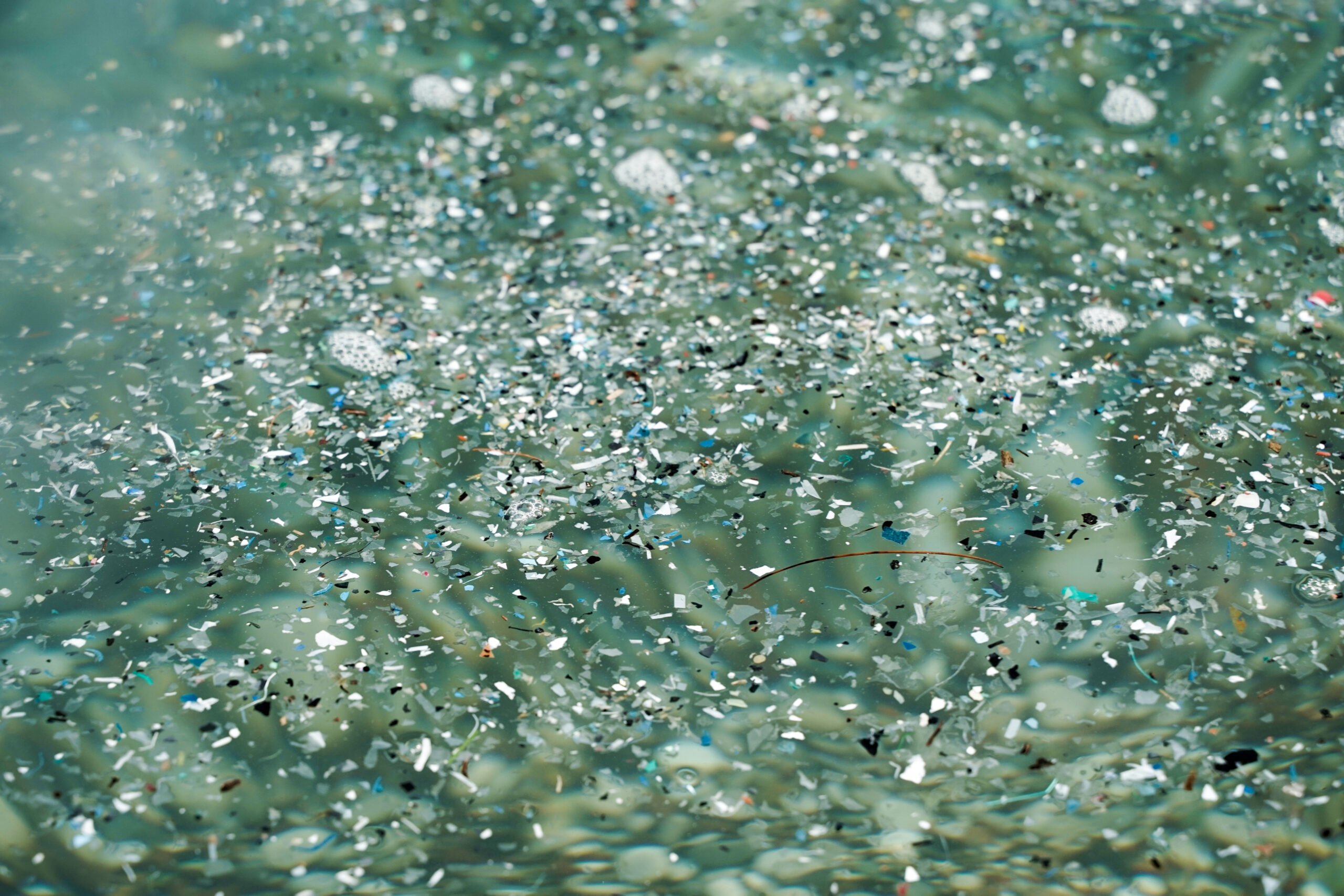The hazy, hot and humid month of July is here, and that means Plastic Free July is upon us. Begun in 2011, the movement is a key initiative of the Plastic Free Foundation. This year’s campaign slogan is, “Small steps, big difference.” In fashion, the question for the apparel industry is how it can combat the microplastics problem. One answer: switching to natural fibers.
Natural fibers are always our first choice to provide comfort and functionality in our apparel collection.
Jen Hinton, Chief Creative Officer, Carve Designs
Pas Une Marque’s Sean Coutts, founder, says the brand uses cotton primarily because it is a natural fiber, which aligns closely with the company’s sustainability ethos.
“Our commitment to sustainability is evident in our choice of materials, and cotton allows us to offer products that are not only durable and comfortable but also have a reduced environmental impact,” Coutts told the Lifestyle Monitor™ in an interview. “This decision is part of a broader strategy to integrate sustainable practices throughout our production processes, aiming to minimize our ecological footprint.”
Carve Designs also says sustainability is paramount to its brand.
“As a swim brand, microplastics are always top of mind, so we factor in sustainability foremost in every fabric choice we make – relevant to the end use of the garment,” said Carve Designs’ Jen Hinton, chief creative officer, in an interview with the Lifestyle Monitor™. “Natural fibers are always our first choice to provide comfort and functionality in our apparel collection.”
And fashion powerhouse Ralph Lauren in 2023 issued its “Global Citizenship & Sustainability Report,” with a strategy called “Timeless by Design,” which “ensures timelessness is embedded from inspiration through to our products’ every use and reuse across generations,” the company states. “Through Timeless by Design, we also aim to implement circular principles, use sustainable materials, protect our planet’s natural resources and champion the people and communities that intersect our business.”
Industry players can learn how synthetic, petroleum-based garments are contributing to plastic pollution in a new study from Cotton Incorporated and leading researchers in Nature Communications titled, “The global apparel industry: a significant, yet overlooked source of plastic leakage.”
The term “plastic leakage” refers to the quantity of plastic released from human activity that ends up polluting the natural environment. Cotton Incorporated’s study reveals synthetic clothing contributes 7.4 million metric tons of plastic pollution every year. Most of this plastic leakage arises from macroplastic waste when synthetic clothes reach the end of their lifecycle. This adds to the well-documented issue of microplastic shedding during the washing and wearing of these clothes. The report estimates the global apparel industry contributes 14 percent of the total plastic leakage into the environment, which equates to approximately 8.3 million metric tons of plastic being released annually due mainly to the global production, use and disposal of synthetic apparel.
“The impact of synthetic garments on plastic pollution is staggering, with at least ten times more leakage than cotton clothing,” says Cotton Incorporated’s Jesse Daystar, Ph.D., vice president and chief sustainability officer. “Designing with natural fibers, like cotton, is one of the key strategies to reduce plastic leakage from the apparel industry.”
Fashion Revolution, a non-profit looking to improve sustainability and transparency in the fashion industry, says the ultimate responsibility for stopping microfiber pollution from clothing lies with companies making the products that shed the tiny particles – particles that come from petroleum-based fabrics, such as polyester, nylon and acrylic. Its “Restorying Riverscapes” study explores the history of the textile industry on the riverscape of the River Churnet at Leek in Staffordshire, England.
“Textiles are the largest source of both primary and secondary microplastics, accounting for 34.8 percent of global microplastic pollution, with around 700,000 microfibers being released in every wash cycle,” the Fashion Revolution report states. “Only 24 percent of brands disclose how they minimize the impacts of microfibers despite textiles being the largest source of microplastics in the ocean.”
Nearly half of all consumers (45 percent) say they are aware of current concerns about clothing microplastics polluting our oceans and waters, according to the Cotton Incorporated 2024 Lifestyle Monitor™ Survey. Of these shoppers who are aware, 65 percent know it comes from apparel made of petroleum-based synthetic fibers like polyester during washing and wearing.
More than one-quarter (29 percent) of consumers are actually bothered that brands and retailers are using synthetic fibers in their clothes, according to the Monitor™ research. And the majority of shoppers (65 percent) say they are likely to check the fiber content label before purchasing a clothing item to avoid synthetic clothes.

Pas Une Marque’s Coutts says the brand is “acutely aware” of these consumer concerns and is addressing them in their designs.
“By avoiding synthetic materials wherever possible, we aim to reduce the release of microplastics into water systems, contributing to a cleaner and healthier environment,” Coutts says. “Our choice to use natural fibers is part of our commitment to being a responsible and conscious brand in every aspect of our operations.”
Cotton Incorporated’s plastic leakage study also recommends designing products for durability and prioritizing reuse, remanufacturing and recycling as key strategies to reduce plastic pollution.
That natural durability is just one benefit that resonates with Pas Une Marque’s brand values, Coutts says.
“Cotton’s durability makes it ideal for crafting high-quality garments that withstand the test of time, thus promoting a more sustainable consumption model by reducing waste,” Coutts says. “Secondly, cotton’s natural breathability and softness enhance the comfort and wearability of our garments, from tees to hoodies and denim. This aligns with our commitment to providing our customers with products that not only look good but feel great too. Additionally, cotton is versatile and adaptable to various dyeing and finishing techniques, allowing us to experiment with different textures and finishes while maintaining the fabric’s integrity.”
“This versatility supports our creative expression, enabling us to innovate continuously while staying true to our sustainability commitments,” Coutts states. “Through the use of cotton, we can ensure that our garments are both environmentally responsible and aligned with the high standards of quality and design that our customers expect from Pas Une Marque.”
